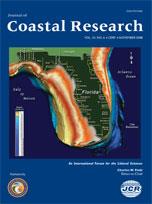This study explores impacts of off-road vehicles on ghost crab populations as a measure of impact from recreational beach use on two beaches of the Cape Hatteras National Seashore and assesses the effectiveness of several alternatives for the use of off-road vehicles (ORVs) on the beach. Ghost crab population size and density have been used as indicators of the environmental quality of beaches and dunes. Data on the creation of an “ORV corridor” in which ORVs can drive on the landward portion of the berm, but not on the beach crest, indicate that it may be possible to preserve ghost crab populations on the beach while still permitting the use of ORVs. Closing the beach crest 24 hours a day may be the optimal solution for preservation of ghost crab populations. High-energy weather events, however, resulted in larger changes to the population dynamics of the ghost crabs. After storms, ghost crabs were able to (re)inhabit areas where their numbers previously had been reduced by the operation of ORVs. While temporary closures of the beach crest may be used to reduce the short-term impacts of ORVs on ghost crab populations on the outer banks of North Carolina, long-term impacts ultimately are controlled by the strength and frequency of storms that reset the system.
How to translate text using browser tools
1 November 2008
Assessing Anthropogenic and Natural Impacts on Ghost Crabs (Ocypode quadrata) at Cape Hatteras National Seashore, North Carolina
Carl H. Hobbs,
Cynthia B. Landry,
James E. Perry
ACCESS THE FULL ARTICLE





